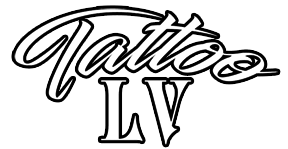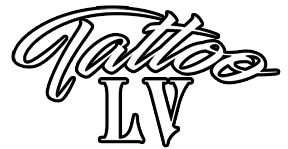Tattoo History
The ancient practice of tattooing was substantively different from our modern art. While today we have tattoo machines, in ancient times there were crude implements that inlaid the human body with inks. In fact, some forms of tattooing were little more than stylized scarring, known as scarification. In instances of scarification, no ink was used, the scar tissue itself made up the design. Ancients used everything from animal bones to tusks as needles, and it was not until the time of Thomas Edison that modern tattoo guns became a possibility. Edison himself came up with the design that he envisioned being used as an engraving device.
The device is simple and straightforward, and today it exists in nearly the same incarnation as Edison came up with. Two electromagnets are positioned next to each other, with opposite poles. These magnets are then activated in alternation, propelling a needle (positioned between them) forwards and backwards. These devices got the name tattoo guns only later, when a trigger activation was added to them.
While tattoo guns have evolved from animal bones to an electromagnetic device, inks are a type of tattoo supplies that have progressed, if in different ways. The modern black ink is different from its ancient cousins, although they are both based on carbon. What is carbon? Well many know it as the element represented in all known life forms; others know it as the element responsible for both graphite and diamonds. For our purposes, it’s burnt organic matter, because for black ink soot is the pigmentation base. Our modern soot based black ink fades to blue, which is one way it differs from the in used by the pacific islanders. The Philippines used plant matter in their tattoo supplies to make a black ink that faded to brown. This ink was a staple for the continuity of tattooing, as it was in the tribal pacific islands that the practice survived the jump from ancient times, to the “rediscovery” of those islands by Europeans in the eighteenth century.
This rediscovery led to a fashion craze of sorts among the European nobility for tattooing. Since the islanders were still using bird bones as needles, the process of tattooing was very painful. It was considered a rite of passage for some bloodlines to have the family crest tattooed on the males. This practice gradually trickled to other professions, especially the sailors who had actually seen the island cultures first hand.
It has been a process of centuries for tattooing to become re-socialized, and it was not a smooth road. But today a tattoo is not seen as a social threat, although you may want to refrain from making tattoos the main subject on your next job interview. Unless of course you’re interviewing to be a tattoo artist, which is a blooming profession that attracts some of the most talented artists of our time. If that is the case you probably should make your tattoos the subject of conversation.
It is precisely for those burgeoning artists who want to work in tattoos that our site exists. We have the best tattoo supplies, tattoo guns, and tattoo kits around. In short, everything an artist needs to set up their own shop is available here.


